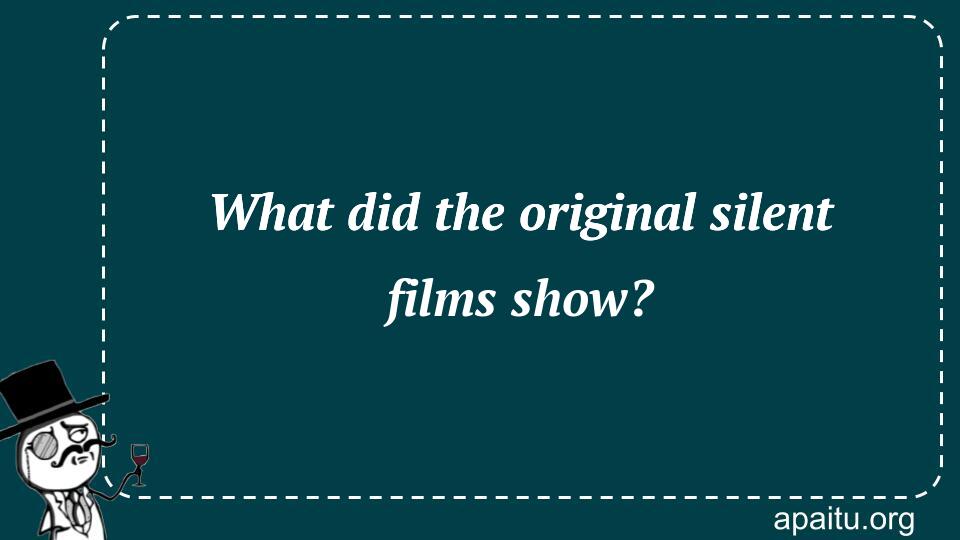Question
Here is the question : WHAT DID THE ORIGINAL SILENT FILMS SHOW?
Option
Here is the option for the question :
- Current events
- Animals
- Building tours
- Advertisements
The Answer:
And, the answer for the the question is :
Explanation:
The very earliest films to be made without sound were not narrative films at all; rather, they were only records of whatever was taking place during the time that the camera was operating. The films showed things like a train pulling into a station, a walk in a garden, or people sharing a kiss. A number of news events, such as the funeral for President William McKinley, were also captured on film.

The original silent films shown in movie theaters primarily depicted current events, real-life stories, and scenes of everyday life. In the early development of film in the late 19th and early 20th centuries, cameras were used to capture live events as they unfolded. This included events like parades, sporting events, floods, fires, wars, coronations, and disasters.
Audiences were fascinated by seeing famous people and iconic places on screen. Early films also adapted stories from newspapers, books, and plays, depicting realistic scenes of work, home life, urban streets, and rural farms. Comedic films and chase scenes with stunts or pratfalls were also popular, showcasing the comedic capabilities of film.
As the film industry grew in the early 1900s, more fictional stories and narratives began to appear. However, for over a decade, a large percentage of films consisted of short documentaries capturing current events, real locations, and realistic dramatizations of everyday life. Capturing and presenting the world as audiences knew it helped establish film as an accessible and appealing medium.
The transition from mainly current events and realistic stories to more elaborate fictional narratives coincided with improvements in film production, distribution, and exhibition. Longer films, specialized sets, lighting techniques, title cards, intertitles, directing styles, and movie stars emerged. Many consider D.W. Griffith’s The Birth of a Nation in 1915 as a pivotal moment, showcasing film’s potential as a powerful medium for storytelling.
Through the silent film era, until the late 1920s, films became longer, more elaborate, and more fictional in scope. However, realism and capturing the world as it was remained an important part of early cinema. Newsreels and documentaries continued for decades, educating and entertaining audiences. And mainstream films continued referencing current events, locations, and lifestyles familiar to viewers.
original silent films primarily showed current events, real-life stories, and scenes of everyday life. Early cameras captured live events like parades, sports, floods, fires, wars, coronations, disasters. Audiences saw famous people and places. Early films adapted news stories, books, plays, depicting work, home life, streets, farms, comedic stunts.
As film grew, more fiction and narratives appeared. But for over a decade, most films were short documentaries on current events, real locations, realistic life dramatizations. Capturing the world audiences knew helped establish film as accessible, appealing medium.
The transition from current events/realism to fiction coincided with improvements in production, distribution, exhibition. Longer films, sets, lighting, titles, directing, stars emerged. D.W. Griffith’s The Birth of a Nation was pivotal, showcasing film’s storytelling power.
Through the silent era, films became longer, more elaborate, fictional. But realism and capturing th